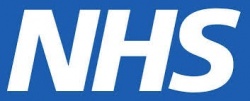Put in the frame
It’s no secret that NHS procurement is more often than not a complex and slow process but Helen Parslow, director of business development EMEA at Harris Healthcare talks of her recent experiences and says that it doesn’t have to be that way.

It’s not only difficult for suppliers to find and manage the resource and expense required to take a procurement process from start to finish but it is equally as painful for NHS organisations trying to ensure they get what they need, when they need it and for an investment that fits budgets and business case requirements.
Frameworks have emerged as an effective tool in the process of bridging the gap between suppliers and the NHS. One of the most recent being London 2015, a £250m and £400m framework agreement to help London trusts looking to replace an electronic patient record system delivered to them under the National Programme for IT in the NHS (NPfIT). The benefits to all those involved in the final framework agreement have been immense.
A mini NPfIT?
While the concept of frameworks is not new to the NHS, there has been some criticism that they may simply recreate a ‘mini’ NPfIT. Yet with huge amounts of clinical input into decision-making, shared decisions among organisations, greater choice, capped maximum pricing, local contracts and the option to be removed from the framework if required, the benefits are being hugely misinterpreted and underestimated.
With the London 2015 framework, for example, seven trusts realised that if they were each to go out to the market individually and assess what was available, not only would they be duplicating each other’s efforts but it would be a hugely time consuming, resource intensive, lengthy and expensive process. Several also felt that their internal expertise in procuring a solution could be challenged. The trusts teamed up with Nautilus Consulting, a specialist organisation made up of experienced clinicians and technologists, to manage the procurement and spread the cost.
A true collaboration
The trusts had monthly Chief Information Officer (CIO) meetings and staff from the consultancy attended each session to ensure they were kept up to date on requirements and activities. As responses to the Official Journal of the European Union (OJEU) came in, the trusts would review each solution, providing scores around each area of functionality on offer. Often, they would do this separately and the responses would be collated offline.
In addition, experience days were held where trusts would gather with suppliers to view demonstrations and ask open questions. This provided valuable opportunities for shared learning and the trust’s cited that being able to discuss issues and requirements with peers proved invaluable and led each trust to consider what it might have missed or may need in the future. The consultancy took responsibility for managing the legalities and the OJEU process, while the trusts focused on what functionality the suppliers would be able to deliver.
Gus Colquhoun, project manager at Nautilus Consulting who led the framework agreement told me: “Not only were the CIOs able to meet together to view solutions they had never seen before, but they felt engaged with each other and the suppliers and that their opinions really mattered.”
Providing a future-proofed solution
As the framework met more than 1600 requirements and encompassed every trust’s need, it is considered to be future proofed. Trusts who might not have considered getting a clinical portal system in 2013, for example, but might need one in 2015 will be able to review the work already completed and evaluate which supplier is best to suit their needs.
Now that the trusts have local choice, the next steps are for them to evaluate the systems available to them through the nine chosen suppliers who have now been selected to participate in the framework. On top of that choice, if for any reason they did decide they want to use another supplier, they of course have the flexibility to look elsewhere and go out to tender - although that seems unlikely at this stage. Meanwhile, other trusts in the South whose existing IT contracts are about to expire have expressed an interest in using the same framework, again reducing further duplication and cost.
Giving SMEs a chance
As for the suppliers, it can take months to produce the documentation for one tender response putting added pressure on other areas of the business such as support, implementation, research and development. This is particularly true for SMEs trying to break into or progress in the market. Such lengthy procurement processes often deter such suppliers from taking part, leaving trusts with limited and often less innovative options. Frameworks can therefore reduce costs for SMEs meanwhile providing greater choice for the NHS who may not have heard of the supplier before.
At a time when resources are limited for the NHS and numerous suppliers are wanting and willing to show trusts what they can help them achieve, the rise of the framework should be something that NHS trusts can embrace across the country to get the best possible outcome for all.
22.08.2013





